January 28, 2020, 3:28 pm | by Ray Nardo
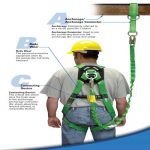 A simple question we get every day is….” Can you just give me some simple tips when my crew is working at heights?”
A simple question we get every day is….” Can you just give me some simple tips when my crew is working at heights?”
Well, yes, we can. First of all, falls are deadly! You must be prepared to protect your employees when working at heights. Working at heights refers to any work that is above ground in which a person could injure themselves if no precaution is taken. Fall protection is required when there is a fall greater than 6 feet within a 6 foot leading unprotected edge. Now that we have the simple prerequisites determined, here’s what to do: Read more.
July 7, 2019, 11:49 am | by Ray Nardo
Fall Protection Basics
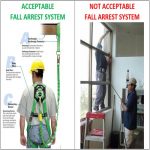 Working at heights can be challenging and difficult. The best way for workers to protect themselves is to remember the basics of fall protection systems. The basics consist of an understanding of the ABC’s of fall protection. The ABC’s of Fall Protection consist of (A) anchorage; (B)body wear, and (C) connectors and can be also known as a PFAS- personal fall arrest system. Although the basics can be boring and simplistic an understanding of them can save your life! Read more.
Working at heights can be challenging and difficult. The best way for workers to protect themselves is to remember the basics of fall protection systems. The basics consist of an understanding of the ABC’s of fall protection. The ABC’s of Fall Protection consist of (A) anchorage; (B)body wear, and (C) connectors and can be also known as a PFAS- personal fall arrest system. Although the basics can be boring and simplistic an understanding of them can save your life! Read more.
June 3, 2019, 10:49 pm | by Ray Nardo
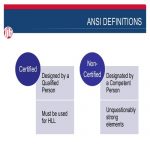 This blog will discuss the difference between Certified and Non-Certified Anchorage. The main differences between Certified and Non-Certified Anchorage are the different categories of anchorage, the design loads for these anchorages, and who is qualified to authorize the usage of the anchor. Anchorages fall under five unique categories: Fall Arrest; Work Positioning; Travel Restraint; Horizontal Lifeline-Rigid Track; and Rescue and ANSI Z359 provides distinct loading requirements for each. The following design loads- the maximum amount of something a system is designed to handle- specified in the ANSI Z359.2-2007. Read more.
This blog will discuss the difference between Certified and Non-Certified Anchorage. The main differences between Certified and Non-Certified Anchorage are the different categories of anchorage, the design loads for these anchorages, and who is qualified to authorize the usage of the anchor. Anchorages fall under five unique categories: Fall Arrest; Work Positioning; Travel Restraint; Horizontal Lifeline-Rigid Track; and Rescue and ANSI Z359 provides distinct loading requirements for each. The following design loads- the maximum amount of something a system is designed to handle- specified in the ANSI Z359.2-2007. Read more.
May 15, 2019, 10:54 pm | by Ray Nardo
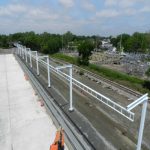 In this blog, we will discuss the 4th and last option on the hierarchy of fall protection. Fall Arrest Systems are last on the hierarchy of Fall Protection because the system and equipment are designed to arrest a fall. Basically, if a fall occurs the system will prevent/arrest the worker from falling to his death or a serious injury. Fall Arrest Systems are also known as Personal Fall Arrest Systems because each employee is equipped with the proper PPE-personal protective equipment combined with a system or anchorage designed to arrest a fall with an acceptable force and clearance margins. Read more.
In this blog, we will discuss the 4th and last option on the hierarchy of fall protection. Fall Arrest Systems are last on the hierarchy of Fall Protection because the system and equipment are designed to arrest a fall. Basically, if a fall occurs the system will prevent/arrest the worker from falling to his death or a serious injury. Fall Arrest Systems are also known as Personal Fall Arrest Systems because each employee is equipped with the proper PPE-personal protective equipment combined with a system or anchorage designed to arrest a fall with an acceptable force and clearance margins. Read more.
April 7, 2019, 8:58 am | by Ray Nardo
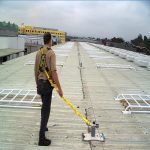 In this blog we will continue to discuss the hierarchy of fall protection and another way for employers to protect their workers. As previously noted, each fall risk situation should be analyzed on a case by case basis so it is important to understand the work being performed, access to the work area, and the frequency of the work. Here, we will discuss the 3rd solution on the hierarchy of fall protection pyramid- Fall Restraint Systems also known as Travel Restraint Systems. Sometimes, Passive Fall Protection Systems- like guardrail- which was discussed in last month’s blog- is not an option and is why an employer moves to the next option on the hierarchy- a Fall Restraint System. Read more.
In this blog we will continue to discuss the hierarchy of fall protection and another way for employers to protect their workers. As previously noted, each fall risk situation should be analyzed on a case by case basis so it is important to understand the work being performed, access to the work area, and the frequency of the work. Here, we will discuss the 3rd solution on the hierarchy of fall protection pyramid- Fall Restraint Systems also known as Travel Restraint Systems. Sometimes, Passive Fall Protection Systems- like guardrail- which was discussed in last month’s blog- is not an option and is why an employer moves to the next option on the hierarchy- a Fall Restraint System. Read more.
February 28, 2019, 10:02 pm | by Ray Nardo
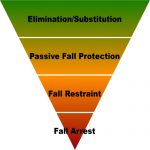 As discussed in last month’s blog understanding the hierarchy of fall protection will help an employer and employees who are working at heights make their work environment as safe as possible. In this blog we will talk a little more about Fall Prevention Systems which is second on the hierarchy of fall protection. Fall Prevention Systems are second on the hierarchy because the first solution– Elimination- preventing access or removing the hazards is always the safest and best first solution. For instance, removing an air handler from the roof to the ground or replacing a ladder with a stairway are ways to eliminate the fall hazard. Ideally, the safest option to ensure worker safety is to completely eliminate the fall hazard. However, if this not possible a Fall Prevention System can be installed to create a barrier which is another way of eliminating the hazard. Read more.
As discussed in last month’s blog understanding the hierarchy of fall protection will help an employer and employees who are working at heights make their work environment as safe as possible. In this blog we will talk a little more about Fall Prevention Systems which is second on the hierarchy of fall protection. Fall Prevention Systems are second on the hierarchy because the first solution– Elimination- preventing access or removing the hazards is always the safest and best first solution. For instance, removing an air handler from the roof to the ground or replacing a ladder with a stairway are ways to eliminate the fall hazard. Ideally, the safest option to ensure worker safety is to completely eliminate the fall hazard. However, if this not possible a Fall Prevention System can be installed to create a barrier which is another way of eliminating the hazard. Read more.
February 4, 2019, 9:19 pm | by Ray Nardo
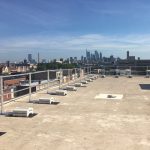 Understanding the hierarchy of fall protection is important because it allows companies to make the best possible choice in protecting their workers who are working at heights. FallProof Systems can help your company in understating this hierarchy; identify fall risks and hazards and then offer solutions. Read more.
Understanding the hierarchy of fall protection is important because it allows companies to make the best possible choice in protecting their workers who are working at heights. FallProof Systems can help your company in understating this hierarchy; identify fall risks and hazards and then offer solutions. Read more.
July 25, 2018, 2:47 pm | by Ray Nardo
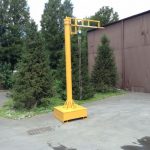 Annual Inspections are a vital part of a fall protection plan for the work place. The fall protection plan is designed to protect both the worker and the employer. Without proper maintenance, any piece of equipment can become unreliable over time. Workers who use systems on a daily basis may not notice gradual deterioration, as there can be virtually no change from one day to the next. Read more.
Annual Inspections are a vital part of a fall protection plan for the work place. The fall protection plan is designed to protect both the worker and the employer. Without proper maintenance, any piece of equipment can become unreliable over time. Workers who use systems on a daily basis may not notice gradual deterioration, as there can be virtually no change from one day to the next. Read more.
August 24, 2016, 11:59 am | by Ray Nardo
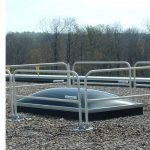 Skylight railings and screens save lives. If your workers are required to work on a roof and are exposed to an unprotected skylight without a guardrail around it or a screen over it, it is, according to OSHA, the equivalent of exposing them to a hole in the roof. OSHA has recorded 47 fatalities from skylight fall-throughs since 2010, with the most recent occurring last month in California. OSHA noted that over the past six years, the fall-throughs arose from a variety of worker behaviors while on, over and around skylights, such as: Read more.
Skylight railings and screens save lives. If your workers are required to work on a roof and are exposed to an unprotected skylight without a guardrail around it or a screen over it, it is, according to OSHA, the equivalent of exposing them to a hole in the roof. OSHA has recorded 47 fatalities from skylight fall-throughs since 2010, with the most recent occurring last month in California. OSHA noted that over the past six years, the fall-throughs arose from a variety of worker behaviors while on, over and around skylights, such as: Read more.
February 2, 2016, 8:24 am | by Ray Nardo
 FallProof Systems is excited to announce that it started 2016 by further expanding its website with the addition of a new section dedicated solely to everyday users of fall protection equipment, and existing customers and their workers. This includes an “ask the experts” form and dedicated question and answer pages organized by industry, known as “Frequently Asked Questions” on many websites. Read more.
FallProof Systems is excited to announce that it started 2016 by further expanding its website with the addition of a new section dedicated solely to everyday users of fall protection equipment, and existing customers and their workers. This includes an “ask the experts” form and dedicated question and answer pages organized by industry, known as “Frequently Asked Questions” on many websites. Read more.
 A simple question we get every day is….” Can you just give me some simple tips when my crew is working at heights?”
A simple question we get every day is….” Can you just give me some simple tips when my crew is working at heights?”









